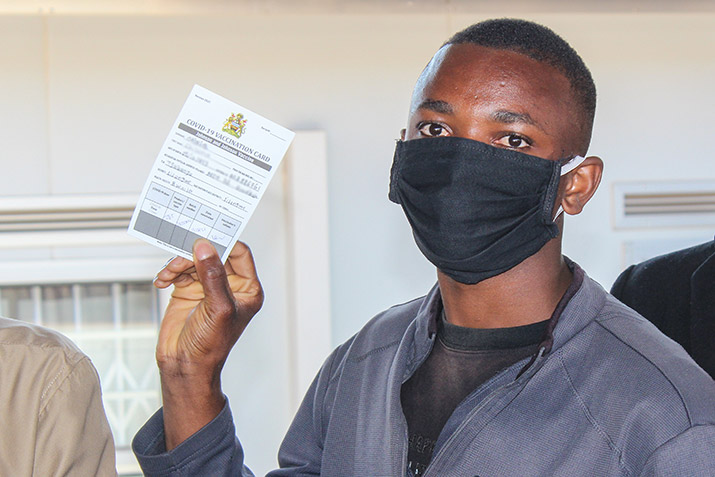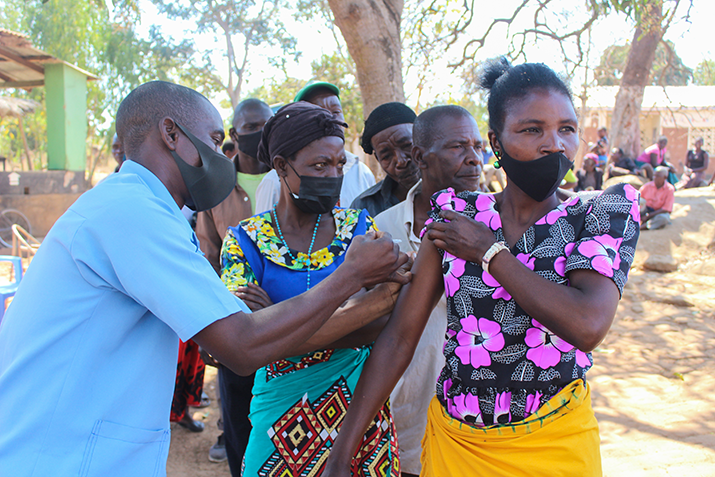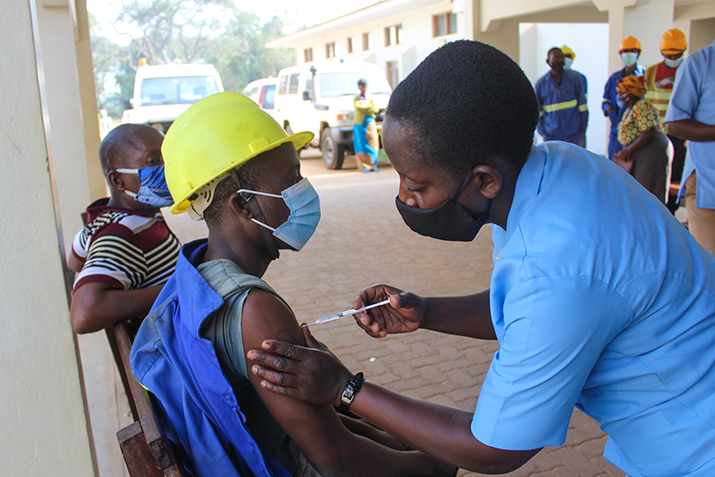Keys to Malawi’s COVID-19 Vaccination Success
Keys to Malawi’s COVID-19 Vaccination Success

“At first I wasn’t comfortable getting the vaccine because of what people were saying on social media and in my community. But I saw with my own eyes that those who haven’t been vaccinated are the ones getting seriously sick and dying.” – Peter Gwazanga, 34, received the Johnson & Johnson COVID-19 vaccine at Bwaila Hospital in Lilongwe, Malawi.
In early August, Malawi received more than 300,000 doses of the single-dose Johnson & Johnson vaccine through the global COVAX initiative. The new shipment comes as the country struggles with a rise in COVID-19 cases and weeks after the government announced it will add several vaccines to its efforts to defeat the virus. Within two weeks, by August 12, the government reported that the Ministry of Health had administered 60,020 of those doses across the country’s 28 districts.
The successful distribution follows a challenging rollout in May in which thousands of doses went unused due to widespread vaccine hesitancy and a shortage of distribution centers at district and community levels. This time, keys to Malawi’s success include a community-centered culture promoting widespread vaccine acceptance, coupled with an approach bringing vaccinations closer to villages across the country.
Engaging chiefs and local leaders

“There has been a lot of hesitancy in my community in regards to vaccine uptake due to the myths spreading around and also because of religious beliefs of some of my people. Knowing how important the vaccine is, and also how far the next health center is, I decided to work with the Ministry of Health to have them conduct an outreach clinic here. Out of the 153 people who came to the outreach clinic today, 96 have been vaccinated in just a day.” – Traditional Authority Chimbalanga, Zomba District
Traditional Authority Chimbalanga is one of over 1,200 local leaders, including faith and village leaders within communities and political, business, and education representatives in urban cities, who counter negative myths and misperceptions and promote the safety and efficacy of COVID-19 vaccines. After participating in vaccine sensitization briefings held by the USAID ONSE Activity, these leaders helped educate the population about symptoms, testing, and treatment; identify and isolate suspected cases; conduct contact tracing; and expand vaccine uptake across communities. Engagement of local leaders, coupled with our COVID-19 awareness activities—including local radio broadcasts and community dialogues—have reached more than 2.3 million people since the start of the pandemic.
Meeting people where they are

“Some of the communities are so far off that as a district, with support from partners like ONSE, we decided to organize [local] outreach vaccination sites to these areas so that people don’t have to travel long distances for the vaccine.” – Mr. Sambikeni, Immunization Coordinator, Mchinji District Hospital
The program is supporting authorities in accelerating the equitable distribution of COVID-19 vaccinations. The program has trained and supervised nearly 1,000 district health workers on COVID-19 vaccine procedures, extending vaccine administration beyond health facilities to remote health posts, shopping malls, and markets to reach people where they are.
“My wife and I are both over 70, and we are both survivors of the virus. It is nothing but a miracle that we survived this months ago. When we heard on the radio that we could now get a single dose of the Johnson & Johnson vaccine, we rushed here to Bwaila Hospital because we don’t want to go through what we went through before.” – Mr. and Mrs. Chonveka
Related: Accelerating Widespread, Equitable Delivery of COVID-19 Vaccinations in Malawi